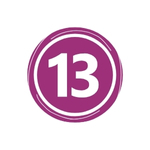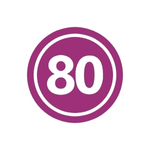Bracebridge Care Home makes the most of remote patient monitoring with benefits to residents and staff alike.
29 June 2021
Introduction
Bracebridge Care Home in Atherstone in West Midlands has been running our remote monitoring since November 2020 with great success. Bracebridge is a large residential care home, whose employees are care assistants. The project, which is fully funded by NHSX, has been beneficial to both residents and care home staff alike, reducing the burden on local GPs and the local George Eliot hospital. Remote patient monitoring enables primary and community care to access clinical data and makes it easier for Care Team Leaders to contact GPs about unwell residents. It means Care Team Leaders are fully in charge of regularly checking their residents for any issues, and then they can flag up any problems immediately.
It’s easy to input information, take blood pressure etc and put it on the system. It takes a couple of minutes at most. This is particularly beneficial in the morning, when Care Team Leaders are busy with medication rounds. If a problem is flagged up, the Care Team Leaders can enter it into the system and know that a response will be imminent, rather than trying to get through on the surgery telephone line, which saves so much time.
What was the challenge?
With COVID-19 massively impacting GP visits to care and residential homes in late 2020, the senior staff at Bracebridge Care Home wanted to improve access to clinical teams, while visits to the care home were reduced due to lockdown and outbreaks of COVID-19.
What happened?
The team at Bracebridge were offered the opportunity to participate in a remote monitoring programme by Coventry and Warwickshire Clinical Commissioning Group (CCG). They were keen to participate as they could see the potential benefits, not least that this would solve the problem of access to GPs during lockdown.
Although it was a difficult time to take up a new project due to COVID-19, the team went ahead and started the project in November 2020, with the support of the CCG and Docobo. Deb Adams, Registered Manager at Bracebridge was instrumental in the roll out and worked with the team at Bracebridge and Docobo to support the deployment. The remote monitoring team set up the system and carried out training remotely due to the pandemic and the team were ready to go.
How does remote monitoring work at Bracebridge Care Home
Once the system was installed, and the care home team had received some virtual online training, the team were ready to start.
This is how it works:
• Care Team Leader records vital signs and symptoms into tablet (using thermometer, blood pressure monitor, oximeter) provided by the Project.
• Information transferred to clinical system and goes to the Integrated Single Point of Access (iSPA) monitoring hub.
• Care home can track information on clinician website.
• iSPA monitoring hub contact responds to any requests or alerts within two hours and the alert is triaged.
• Baseline readings can be recorded monthly with a ‘Resident of the Day’ system.
For example, if a Care Team Leader spots a potential problem with one of the residents, i.e. the resident’s leg looks red and infected, they would log this in DOC@HOME and will get a phone call from the team at the iSPA hub within two hours to take some more information. This can then be triaged and if necessary, wait until the next weekly virtual ward round.
In May 2021, the remote monitoring solution prevented 13 GP contacts / call outs
Since the start of the project, 80% of calls were dealt with within 2 hours
Quick and easy to install and easy for staff to use
Deb Adams, Registered Manager at Bracebridge explains: ‘As soon as I and the senior staff did the training, we were off! The training was brilliant. The staff embraced the remote monitoring solution. They keep up to date with the monthly data they have to input, and have done so right from the beginning – it soon became the norm. Data collection gets done really quickly, as it’s an easy system to use. Question Sets are really simple, there is just one button to use and it’s very hard to get wrong. The seven senior staff on days and nights all embraced it as its very simple and not complicated at all’.
Deb continues ‘It’s easy to input information on the remote monitoring system, take blood pressure etc.. It takes a couple of minutes at most. This is particularly beneficial in the morning, when Care Team Leaders are busy with medication rounds. If a problem is flagged up, the Care Team Leaders can enter it into the system and know that a response will be imminent, rather than trying to get through on the surgery telephone line, which saves so much time. Referrals which would have taken several hours before, are literally taking minutes and it means that the resident will be guaranteed a prescription and a good outcome.’
"One of the most positive things is that the remote monitoring frees up so much time for our team. Instead of spending so much time phoning the surgery or the district team and not getting through for ages, they are guaranteed a prompt response." Deb concludes: ‘It’s a changing world now – gone are the times when you pick up the phone to the GP. Pre-COVID – we would ring the GP every day. Remote monitoring and the virtual ward has streamlined a lot of things in our care home.’ Deb Adams, Registered Manager at Bracebridge.











